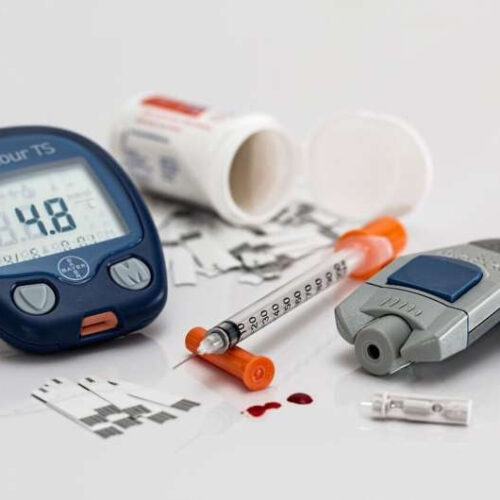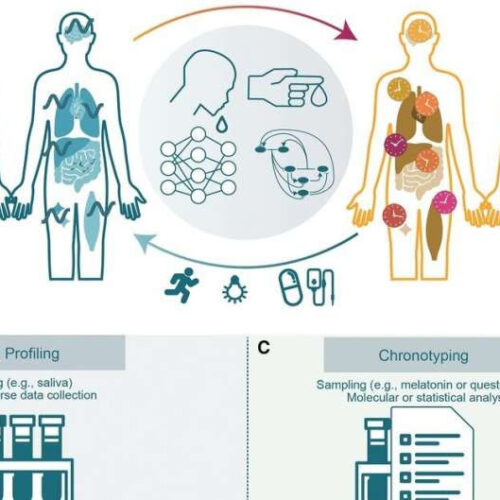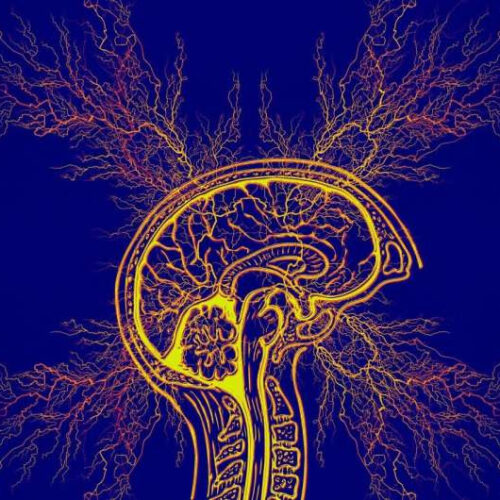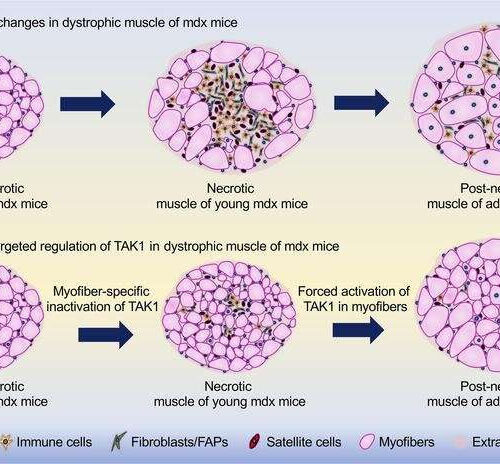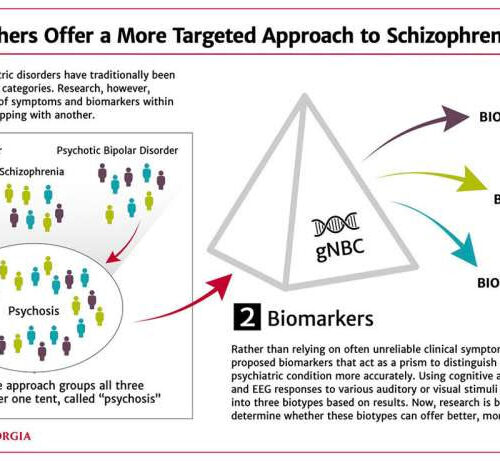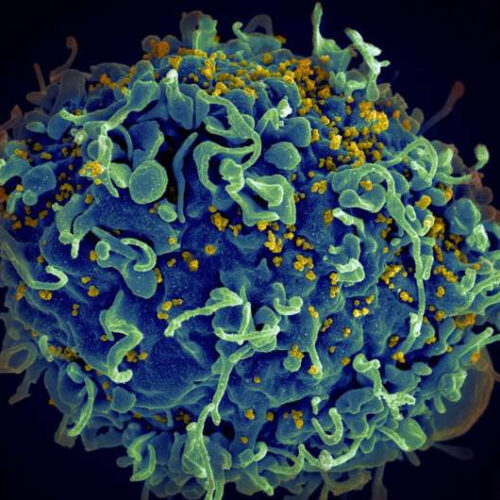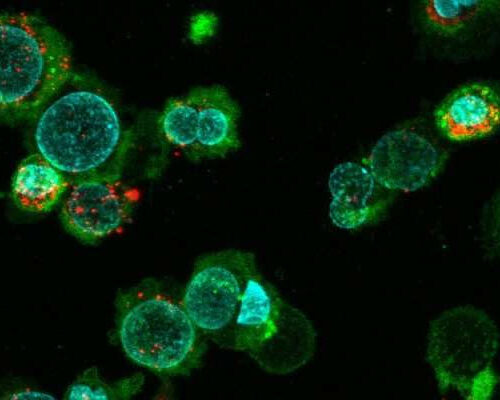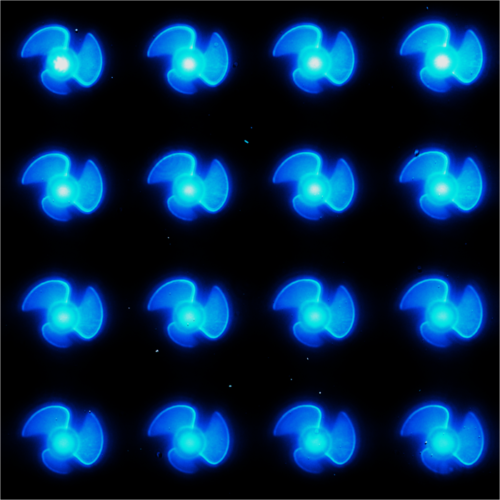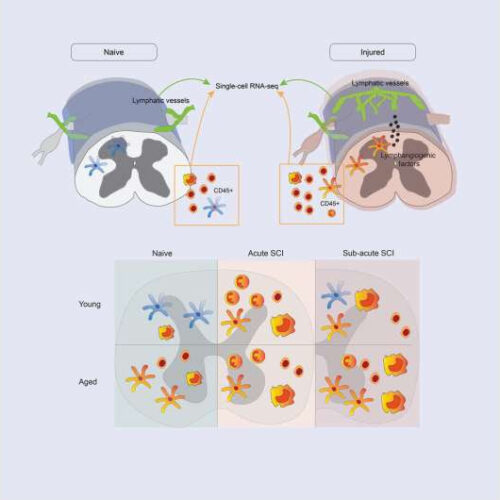by Klick Applied Sciences Credit: Pixabay/CC0 Public Domain Scientists at Klick Labs have developed a new way to catch the earliest signs the human body is failing to control blood glucose levels before they reach prediabetic levels in patients. In findings published today in Mayo Clinic Proceedings: Digital Health, researchers have outlined a new method of analysis that...
Team develops a non-invasive method for profiling a person’s unique circadian rhythm
by BIH at Charité The circadian system and methods for determining CRs and chronotyping. (A) The role of the circadian clock in health and disease. A proper functioning clock ensures correct timing of physiological events such as sleep/wake cycles and contributes to sustain a healthy life (left). The disruption of CRs (right) is associated with...
Study: Having Alzheimer’s genes may increase your risk of epilepsy
by American Academy of Neurology Credit: Pixabay/CC0 Public Domain People with a genetic predisposition for Alzheimer’s disease may have an increased risk of epilepsy and people with a certain type of epilepsy may have an increased risk of developing Alzheimer’s disease, according to a study published in the May 24, 2023, online issue of Neurology. “Our research found that...
Researchers target protein that can slow down muscular dystrophy
by Laurie Fickman, University of Houston Graphical abstract. Credit: JCI Insight (2023). DOI: 10.1172/jci.insight.164768 A team of researchers at the University of Houston College of Pharmacy is reporting that by manipulating TAK1, a signaling protein that plays an important role in development of the immune system, they can slow down disease progression and improve muscle function in Duchenne muscular dystrophy...
Asking better questions: Psychology researchers changing the way we diagnose, treat schizophrenia
by David Mitchell, University of Georgia Clementz, McDowell and their teams have identified three new psychosis classifications using data captured from brain scans. Rather than grouping patients in the previous classifications of the DSM—schizophrenia, bipolar and schizoaffective disorder—they have established new groups called “biotypes.” Credit: Lindsay Bland Robinson Brett Clementz doesn’t love the term “schizophrenia.” Sure,...
Researchers identify strong T-cell response in first-in-human nanoparticle HIV vaccine
by Fred Hutchinson Cancer Center Credit: Unsplash/CC0 Public Domain Researchers from Fred Hutchinson Cancer Center in Seattle, Scripps Research in La Jolla, California, IAVI and other collaborating institutions have characterized robust T-cell responses in volunteers participating in the IAVI G001 Phase 1 clinical trial to test the safety and immune response of a self-assembling nanoparticle HIV vaccine. Their work, published in Science...
New production process for therapeutic nanovesicles
by University of Basel The extracellular vesicles (red) produced using the new technique are absorbed in vitro by immune cells (green; nucleus in turquoise) and can therefore influence an organism’s immune response. Credit: C. Alter, Department of Pharmaceutical Sciences, University of Basel Particles known as extracellular vesicles play a vital role in communication between cells and...
Why do some long Covid patients continue to have difficulty exercising?
UNIVERSITY OF CALIFORNIA SAN FRANCISCO MEDICAL CENTER While some patients recover from the effects of SARS-CoV-2 infection, others have experienced the aftereffects of COVID-19 long after the initial infection. One of these long COVID symptoms is reduced exercise capacity. But questions remain about the mechanisms underlying why some COVID patients continue to experience diminished exercise...
Medical “microrobots” could one day treat bladder disease, other human illnesses
UNIVERSITY OF COLORADO AT BOULDER IMAGE: MEDICAL “MICROROBOTS” COULD ONE DAY DELIVER PRESCRIPTION DRUGS THROUGHOUT THE HUMAN BODY. CREDIT: SHIELDS LAB A team of engineers at the University of Colorado Boulder has designed a new class of tiny, self-propelled robots that can zip through liquid at incredible speeds—and may one day even deliver prescription drugs...
Immune system discovery could lead to better spinal injury treatments
by Josh Barney, University of Virginia Credit: Neuron (2023). DOI: 10.1016/j.neuron.2023.04.011 New research suggests that the immune system’s ability to respond to spinal-cord injuries diminishes with age, and identifies potential avenues to improve that response and help patients heal. The findings offer insight into how the immune system responds to spinal-cord injuries, and why that response becomes blunted with the passing years....

